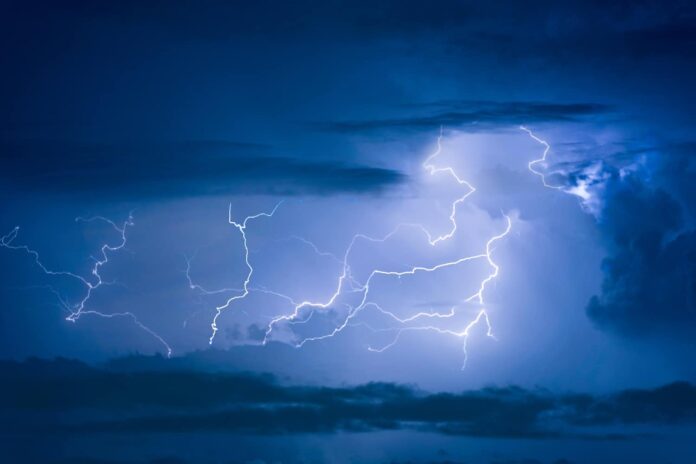Lightning has recently been added as an essential climate variable of the Global Climate Observing System. Cloud-to-ground lightning strikes have the potential to power fires, injure or kill people, and harm equipment and buildings like electricity lines and wind turbines. It also contributes to NOx and ozone as air pollutants. The effects of global warming on small-scale and local meteorological phenomena like lightning activity still need to be fully understood.
The number of detected lightning strikes in the European Eastern Alps has more than quadrupled in the previous 40 years due to the effects of the climate crisis.
A group of researchers from the University of Innsbruck published their findings in the journal Climate Dynamics, demonstrating that the climate crisis is leading to an increase in extreme weather occurrences today and in the future. The study aims to describe lightning made up of several processes and then use that description to examine historical lightning.
The team, which included atmospheric and statistical scientists Thorsten Simon, Georg Mayr, Deborah Morgenstern, Nikolaus Umlauf, and Achim Zeileis, used a unique combination of extensive data sets to reconstruct the lightning activity of cloud-to-ground lightning in the area between 1980 and 2019.
Thorsten Simon said, “In this study, we link two sources of information, both available at a spatio-temporal resolution of 32 km x 32 km and one hour. From these datasets, we obtain, on the one hand, information on lightning activity with seamless records over the last decade. On the other hand, we access analyses of atmospheric conditions – including cloud microphysics – at an hourly resolution over the past four decades.”
He added, “Using machine learning, we could map the gapless lightning measurements from 2010-2019 with meteorological data. We then used machine learning and meteorological data to reconstruct lightning frequencies in the past, i.e., when there were no such lightning measurements. And this even extends to variations in the diurnal cycle”.
The data originate from the ALDIS lightning detection system, while the atmospheric analyses are from the European Centre for Medium-Range Weather Forecasts (ECMWF)’s fifth ERA-5 reanalysis (ERA5).
According to researchers, Mountainous areas in the Alps are experiencing increased thunderstorms and lightning due to rising temperatures. The most significant changes occurred in the high Alps between 1980 and 2019, with lightning activity doubling in the 2010s compared to the 1980s. In the high-altitude areas of the Eastern Alps, the lightning season reaches a stronger maximum and starts a month earlier. During the day, the peak is up to 50% stronger, with more lightning in the afternoon and evening. Similar signals along the southern and northern edges of the Alps are present but weaker.
The researcher said, “Our analyses over this terrain have now shown that the rising temperatures due to climate change are causing the frequency of thunderstorms and, thus, lightning to increase even further. The fact that this trend is so clearly in line with global changes in the climate system also surprised us.”
The researchers provide an important contribution to understanding the relationships between weather, climate, and lightning activity by taking a comprehensive look at different processes over the complex terrain of the Alps.
Thorsten Simon said, “This is important for the appropriate development of preventive measures to protect people and the environment from the potential damage caused by lightning strikes.”
Journal Reference:
- Thorsten Simon, Deborah Morgenstern, et al. Amplification of annual and diurnal cycles of alpine lightning. Climate Dynamics. DOI: 10.1007/s00382-023-06786-8
